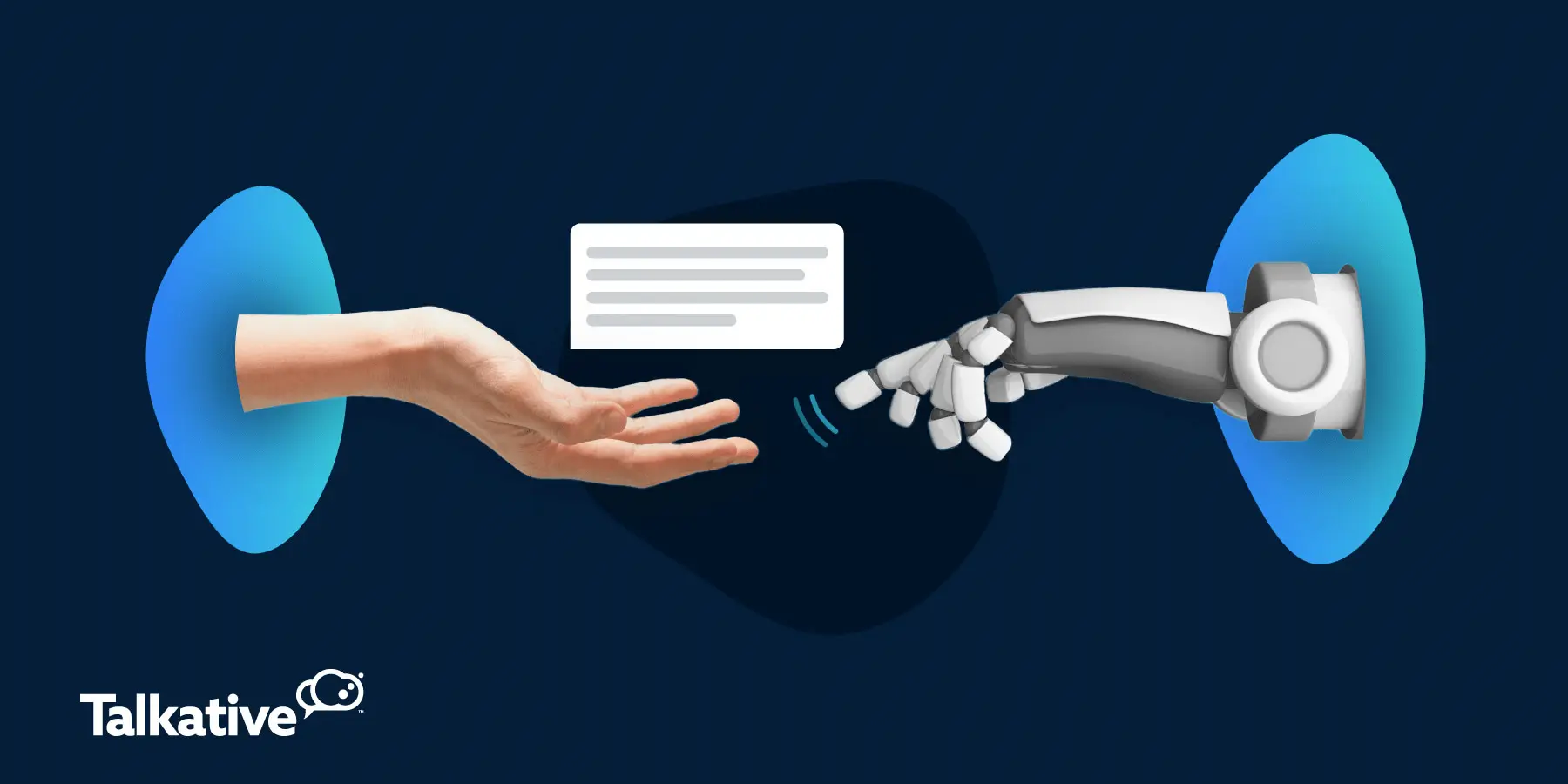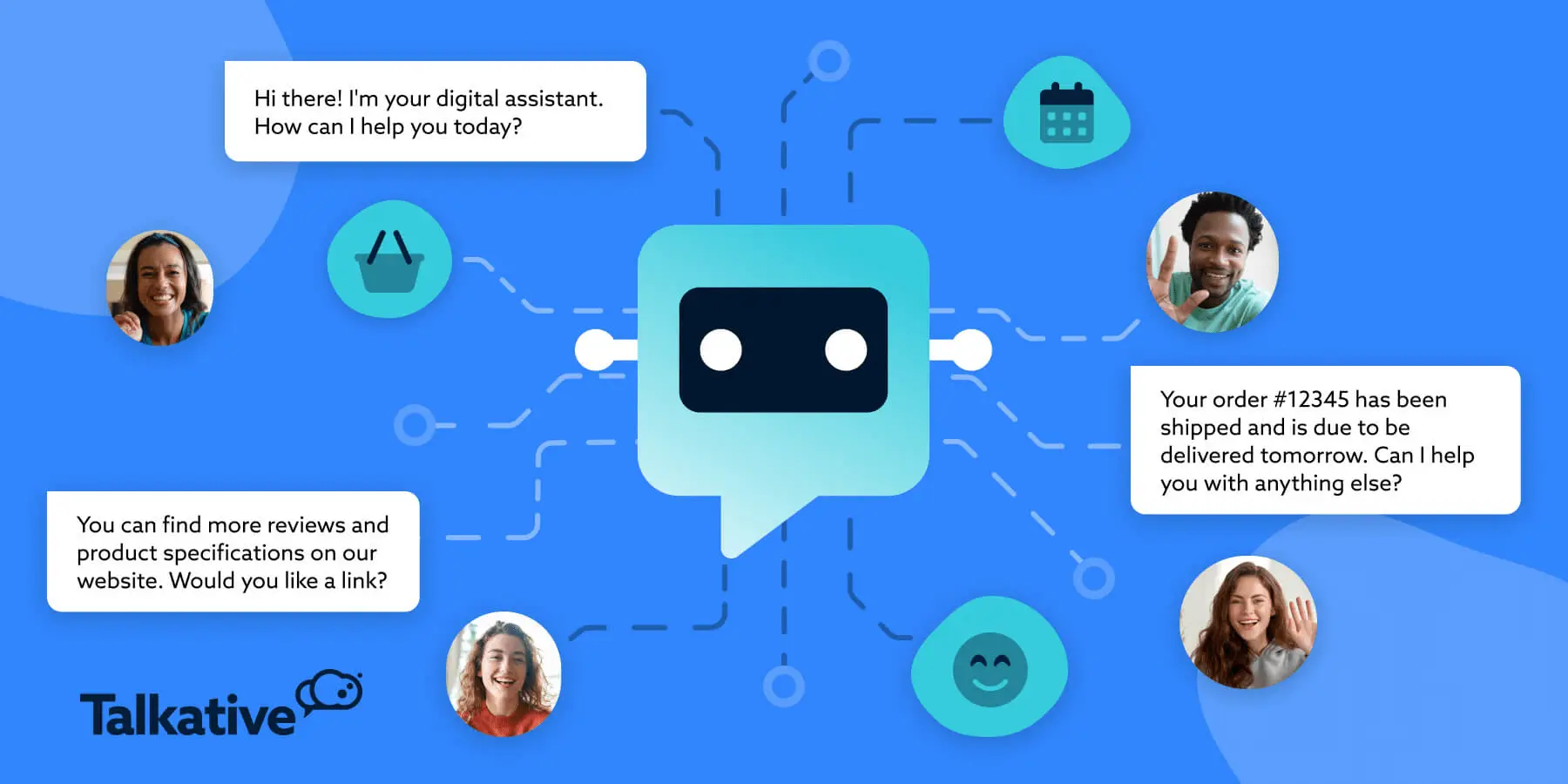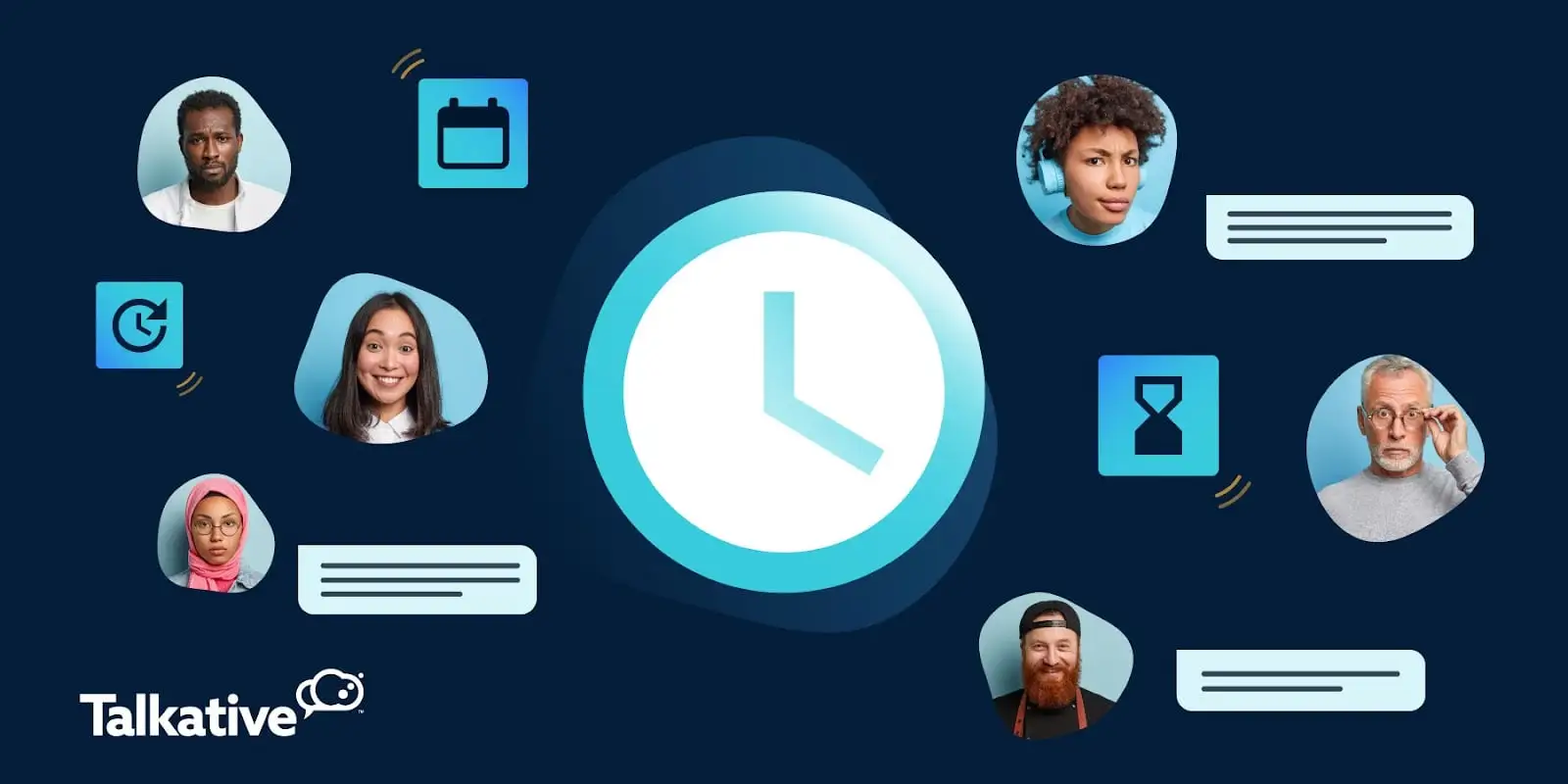Omnichannel chatbots are a game-changer for automated customer service.
By leveraging advanced AI and integrations, these chatbots help brands deliver efficient support across multiple channels and touchpoints.
For consumers, omnichannel chatbots offer a seamless and consistent customer experience.
But in order to gain these benefits, it’s important to understand how omnichannel chatbots work.
You also need to know how to implement and use them effectively for optimal results.
That’s why we’ve put together this guide - to help you get the most out of an omnichannel chatbot solution. We’ll cover...
- What is an omnichannel chatbot?
- How do omnichannel chatbots work?
- The benefits of omnichannel chatbots
- How to use omnichannel chatbots for customer support
TL;DR:
How to use an omnichannel chatbot for customer engagement & support: Best practices...
- Choose Channels Strategically: Use data from analytics and customer feedback to identify and prioritize the channels your customers prefer.
- Integrate with Existing Systems: Ensure your chatbot seamlessly integrates with your CRM, contact center systems, and other platforms to help create a cohesive customer experience.
- Build a Knowledge Base: Create and integrate a comprehensive knowledge base, enabling your chatbot to answer a wide range of customer queries accurately.
- Optimize Usability Across Devices: Ensure your chatbot interface is responsive and user-friendly, delivering a cohesive user experience across all devices, platforms, and touchpoints.
- Enable Seamless Handoffs to Human Agents: Make it easy for customers to switch to human support when needed, ensuring a smooth transition and maintaining satisfaction.
- Monitor and Improve Performance: Track key performance metrics/KPIs and use analytics reporting to continuously refine and improve your chatbot’s effectiveness.

What is an omnichannel chatbot?
Chatbots are software programs designed to interact with humans via text or voice commands.
They generate outputs in response to user inputs/messages, mimicking a back-and-forth conversation.
In the context of customer service, chatbots typically fulfill the role of a virtual assistant.
They do this by assisting with customer queries, support requests, and other workflow tasks.
Traditionally, customer service chatbots were only accessible via business websites.
Omnichannel chatbots, by contrast, can be implemented across multiple touchpoints, including:
- Websites
- Mobile apps
- Social media platforms (e.g. Facebook Messenger, Instagram)
- Messaging apps (e.g. SMS, WhatsApp)
The key feature of an omnichannel chatbot is its ability to provide a smooth and unified customer experience.
This enables customers to interact seamlessly with the chatbot, whatever platform or channel they use.

How do omnichannel customer service chatbots work?
How a chatbot works depends on its underlying technology, design, and the specific tasks or functions it’s built to perform.
Traditional chatbots operate using a rule-based, "decision tree" framework and scripted responses.
These bots work by evaluating keywords/phrases against their pre-set parameters to generate the most relevant output.
This makes them a useful tool for automating basic customer inquiries (i.e. FAQs).
Modern chatbots, by contrast, work by incorporating artificial intelligence technologies like...
- Natural language processing (NLP)
- Generative AI
- Large Language Models (LLMs)
- Conversational AI
- Machine learning
AI chatbot solutions are typically more advanced than their rule-based counterparts.
They can understand and generate natural language, maintain contextual understanding, and handle a vast range of queries.
The result is a much more humanized, fluid, and conversational customer experience.
But whether they’re rule-based, AI-powered, or a combination of the two, all omnichannel chatbots are designed to integrate with various platforms and systems.
This integration is what enables them to deliver consistency and continuity across channels.

Key benefits of omnichannel chatbots
The benefits of omnichannel chatbots can be significant for both businesses and customers.
Below, we’ll explore some of the key advantages.
Seamless customer experience
One of the main benefits of an omnichannel strategy is that it creates a cohesive and seamless customer experience.
Whether customers reach out via your website, app, or social channels, omnichannel chatbots provide a consistent level of service.
They can also maintain continuity across channels.
For example, a customer might start an interaction via your company website but later switch to your mobile app.
An integrated omnichannel chatbot can then pick up the conversation where it left off.
This offers a smoother customer journey, saving users from the frustration of repeating themselves.

Improved customer satisfaction & retention
The seamless experience provided by omnichannel chatbots naturally leads to improved customer retention and satisfaction.
It’s why businesses that leverage omnichannel effectively retain 89% of their customers.
This is in stark contrast to a 33% retention rate for those with weak omnichannel strategies.
With omnichannel chatbots, customers can effortlessly switch between touchpoints and platforms.
This flexibility empowers consumers to engage with businesses via their preferred communication channels.
It also facilitates faster resolutions, maximum convenience, and a more personalized experience.

Immediate assistance around the clock
We all know today’s consumers want (and sometimes expect) immediate support.
Chatbots excel in this area, responding to customers three times faster than human agents on average.
Another strength bots have over humans is their constant availability.
They can be online 24/7, providing instant answers to customers’ questions around the clock.
Combine this speed and availability with the benefits of omnichannel, and you’ll gain a powerful chatbot solution.
One that ensures efficient and reliable service regardless of the channel used or the time of day.

Optimal operational efficiency
Chatbots improve efficiency by automating customer interactions and tasks.
This saves both time and money, reducing agent workloads and streamlining customer support.
In fact, chatbots are predicted to save businesses 2.5 billion hours and $8 billion in 2024 alone.
With omnichannel chatbots, the potential efficiency gains can be even greater.
By integrating all chatbot touchpoints into a unified system, customer service requests can be managed more effectively.
This increased efficiency gives human agents more time to focus on complex tasks and building customer relationships.

Varied customer data
Omnichannel chatbots collect a wealth of customer data from interactions across numerous channels and platforms.
This offers valuable insights into customer engagement, demographics, preferences, and pain points.
Armed with this information, you can make informed and targeted improvements to your customer support strategy.
You can also optimize your chatbot’s performance, making it more efficient and accurate over time.

Using omnichannel chatbots for customer interactions: Best practices
Omnichannel chatbots must be implemented and used effectively if you want to gain the potential benefits.
The following best practices will help you achieve optimal results from your bot.
1. Choose your channels strategically
As we’ve covered, a key benefit of omnichannel chatbots is that they operate across various channels.
However, that doesn’t mean that you should deploy one on every potential touchpoint.
Instead, you should conduct research and choose your channels based on your findings.
To do this, leverage analytics tools, reporting, and feedback surveys/forms to gather data.
You can then use this information to analyze trends in customer behavior and user preferences.
This will uncover the platforms and touchpoints your customers favor most when it comes to digitally engaging with your brand.
Once you have these findings, you can devise your chatbot strategy based on the preferred channels.
This will ensure your omnichannel chatbot is effectively positioned to meet your customers where they are most active and engaged.

2. Integrate with existing systems & platforms
Effective integration is essential for an omnichannel chatbot strategy.
It’s what enables the bot to function seamlessly within your existing digital infrastructure.
A good omnichannel chatbot solution should support integrations with your backend systems.
These include your CRM software, contact center systems, and other platforms.
If your omnichannel chatbot falls short in this area, it may pose a roadblock to successful implementation and effective performance.
It's why the Talkative platform has all bases covered when it comes to compatibility and integrations.
We offer deep integrations with a range of systems and platforms, including (but not limited to):
- Salesforce
- Mitel
- MiContact Center Enterprise
- Microsoft Teams
- iOS Apps
- Social messaging platforms - SMS/MMS, WhatsApp, Facebook Messenger
By integrating your omnichannel chatbot with existing systems, you'll create a cohesive digital ecosystem that enhances customer experience.

3. Build a comprehensive knowledge base
Leveraging a knowledge base can significantly enhance a chatbot’s capabilities.
Knowledge base content gives omnichannel chatbots access to a vast repository of information and expertise that’s specific to your brand.
By tapping into this database, chatbots can answer a much more diverse range of customer queries.
With Talkative, you can easily create AI knowledge bases using web pages and file-based content.
You can then integrate them with our GenAI chatbot, effectively training the bot on its content.
From there, the bot can answer countless questions about your business, products, and services.
Using a centralized knowledge base will ensure your chatbot provides accurate and unified information across all channels.
This contributes to the omnichannel CX by delivering consistency and reliability - wherever and whenever customers need it.
4. Optimize usability across devices
From desktops to smartphones and tablets, customers interact with brands in a variety of ways.
Therefore, it’s vital that you optimize chatbot usability for all devices and platforms.
After all, the whole point of omnichannel chatbots is that they can engage customers seamlessly regardless of the medium used.
This means that the chatbot interface needs to be responsive and adaptable to different screen sizes.
Its branding and user experience also have to be consistent, irrespective of the device and channel being used.
You should conduct regular testing on multiple devices and operating systems to identify and resolve any usability issues.
By doing so, you’ll ensure a streamlined and user-friendly experience across the board.

5. Ensure seamless handoffs to human agents
No matter how advanced they are, all chatbots have limitations.
This means there will always be some instances that require human intervention.
In these situations, your omnichannel chatbot must be able to carry out seamless handoffs to human agents.
Ensuring this capability is essential for maintaining customer satisfaction.
It’ll also make customers more inclined to engage with your chatbot.
Case in point, 80% of consumers are happy to use chatbots if they can switch to a human agent when needed.
With this in mind, it’s important that you make it easy for users to initiate an escalation to human support.
It’s also crucial that the chatbot transfers all relevant information and conversation history to the agent.
This will maintain a smooth customer journey and the omnichannel experience.

6. Monitor and improve performance
Ongoing performance management is necessary for long-term chatbot success.
It will ensure the chatbot remains an effective and valuable asset to your omnichannel support strategy.
Start by establishing key performance indicators (KPIs) that align with your business goals.
For chatbots, these might include key metrics like:
- Containment Rate: The percentage of conversations fully handled by the chatbot without human intervention, showing its ability to resolve queries independently.
- First Contact Resolution (FCR) Rate: The chatbot’s ability to resolve user issues during the first interaction.
- Error/Confusion Rate: The frequency with which your chatbot fails to understand queries or provides irrelevant answers.
- Customer Satisfaction (CSAT) Score: Direct user feedback regarding user satisfaction with the chatbot experience, often gathered through post-interaction surveys or sentiment analysis.
In addition to tracking metrics, you can gain deeper insights into performance through chatbot analytics and reporting.
For example, with Talkative, you can use our AI Knowledge Gap Report to generate a full list of all the questions customers have raised with your chatbot.
The report also includes whether or not the bot was able to answer them successfully.
In turn, you can optimize and expand your chatbot’s training data to fill any gaps and improve future performance.

The takeaway: Implementing omnichannel chatbots
It’s clear that omnichannel support and chatbots are not merely trends.
These technologies are here to stay - and will shape the future of digital customer service.
For businesses that want to stay ahead of the curve, choosing the right omnichannel platform is essential.
That’s where Talkative comes in.
With our scalable and flexible chatbot solution, you can:
- Choose between a rule-based bot, AI, or a hybrid approach (an AI chatbot with rule-based fall-back for maximum efficiency).
- Integrate our GenAI chatbot with your own AI knowledge bases to create expert virtual assistants.
- Meet and serve customers across your website, app, and social messaging channels.
- Seamlessly escalate to human agents when needed.
- Leverage AI-driven analytics and reporting.
- Provide multilingual customer service with real-time translation technology.
- Build multiple chatbots in-house (if you prefer to take the wheel with bot design).
- Automate customer-specific queries with chatbot fulfillment.
In addition to chatbots and AI solutions, we offer an omnichannel suite of customer contact channels - including live chat, web calling, video chat, cobrowse, messaging, and more.
We also facilitate seamless integrations with leading CRMs and contact center systems.
Book a demo with Talkative today, and check out our interactive product tour.



